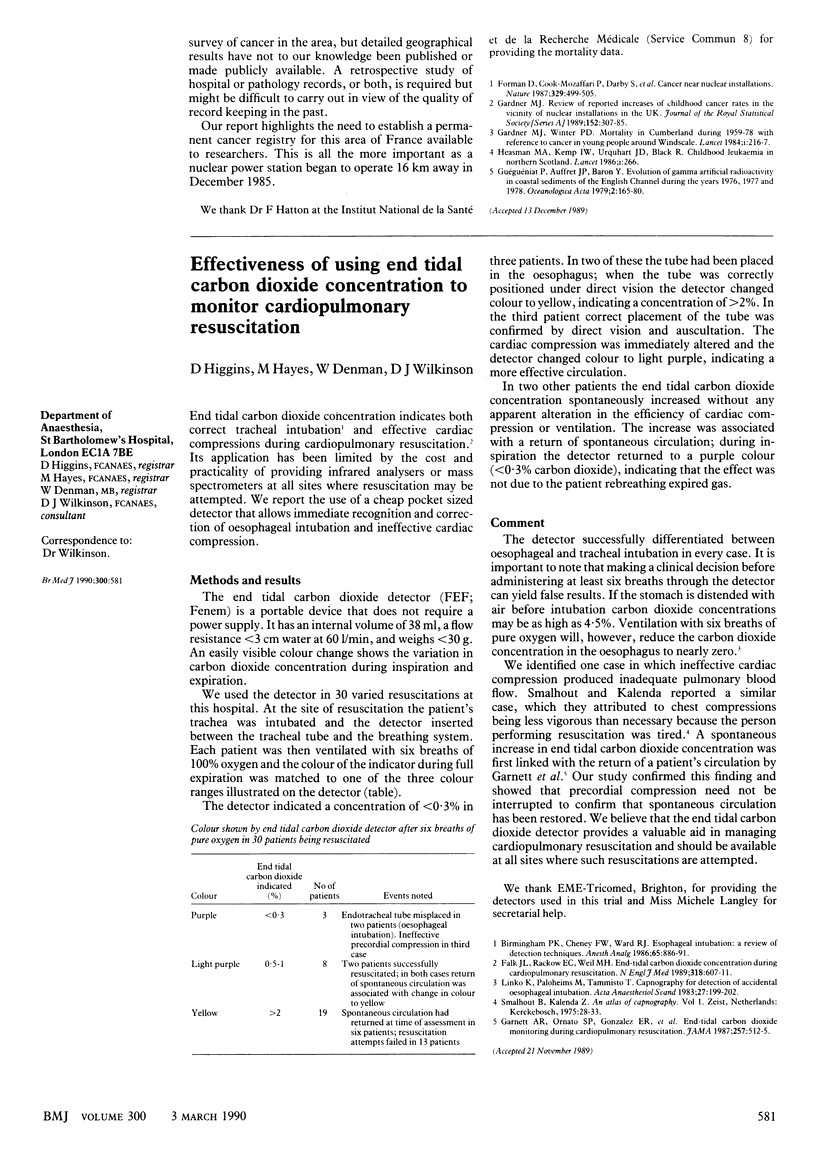Full text
PDFPage 581

Selected References
These references are in PubMed. This may not be the complete list of references from this article.
- Birmingham P. K., Cheney F. W., Ward R. J. Esophageal intubation: a review of detection techniques. Anesth Analg. 1986 Aug;65(8):886–891. [PubMed] [Google Scholar]
- Falk J. L., Rackow E. C., Weil M. H. End-tidal carbon dioxide concentration during cardiopulmonary resuscitation. N Engl J Med. 1988 Mar 10;318(10):607–611. doi: 10.1056/NEJM198803103181005. [DOI] [PubMed] [Google Scholar]
- Garnett A. R., Ornato J. P., Gonzalez E. R., Johnson E. B. End-tidal carbon dioxide monitoring during cardiopulmonary resuscitation. JAMA. 1987 Jan 23;257(4):512–515. [PubMed] [Google Scholar]
- Linko K., Paloheimo M., Tammisto T. Capnography for detection of accidental oesophageal intubation. Acta Anaesthesiol Scand. 1983 Jun;27(3):199–202. doi: 10.1111/j.1399-6576.1983.tb01934.x. [DOI] [PubMed] [Google Scholar]


